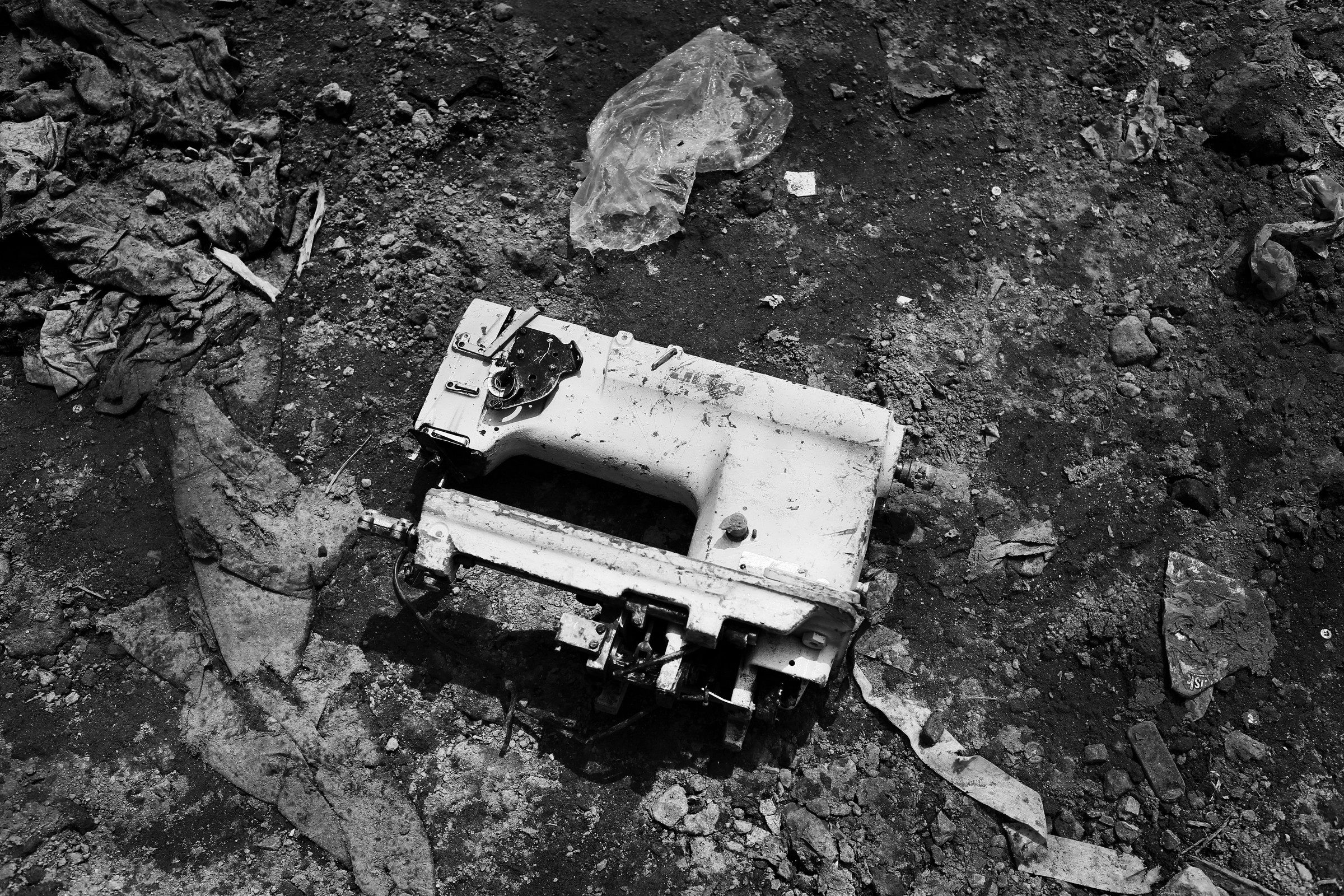A young man somehow managed to get hold of his mobile phone to give his mother a last call. A woman took out her ID card and held on to it firmly, so at least her body could be identified for her children. These are just some of the horrific stories resulting from the collapse of ‘Rana Plaza’, an eight-story commercial building in Savar, Dhaka (Bangladesh), on April 24th of this year. More than 1100 people died and thousands of more were injured badly. Documentary photographer Turjoy Chowdhury was present during and after this tragedy and made a haunting photo report of the aftermath.
“Honestly, I don’t open these images unless there is any urgent necessity. I always feel that I am bearing the sorrow and dead load of the victims with me. “

Rana Plaza housed apartments, shops, a bank and several garment factories that produced clothes for brands like Benneton, el Corte Ingles, Mango, Walmart, and others. Shops and banks on the lower floors closed down when cracks were discovered in the wall, while the factory workers were ordered back to work (some even under threat of withholding their income). When the building collapsed during rush hour, over 3000 workers were present in the building.
Seeing the news, photojournalist / Documentary photographer Turjoy Chowdhury had a quick internal debate, received some wise words from his mentor and decided to capture this tragedy.
“There were still people with the hope that their relatives would return to them safely, while others were only waiting for the dead bodies of their loved ones.”

Turjoy: When I saw the news of the Rana Plaza collapse on TV, I was out of town for another shoot. At first I was at doubt (by the horrifying visuals) if I should cover this incident or not, as I wasn’t assigned after all. The ethical issues were killing me, but after discussing it with one of my teachers I was reminded about my responsibility (as documentary photographer). After I gathered my courage, I went to Savar.

As I arrived in front of the collapsed Rana Plaza, there was a mild odor of death in the air. At that moment, the rescuers were still on duty. There were still people with the hope that their relatives would return to them safely, while others were only waiting for the dead bodies of their loved ones. Some people just stood in their place, petrified. Only their eyes were searching for something; justice maybe. I also found some people taking part in protests against the government.



“I had never been in a situation where I had to take pictures surrounded by so many dead bodies and the continuous noise of weeping, shouting and screaming.”
While I was shooting my very first photo-story of dowry victim Zohora A tale of Bibi Zohora‘, she passed away in front of me. At that moment, the experience made me mentally unstable and I wasn’t able to sleep for at least a week. Shooting the ‘Savar tragedy’ was another horrible experience. I had never been in a situation where I had to take pictures surrounded by so many dead bodies and the continuous noise of weeping, shouting and screaming.
It took me some days before I was able to open these images, because whenever I see these photographs it reminds me of the horrifying experience and drag me to that place again and again. Honestly, I don’t open these images unless it’s a necessity. I always feel that I’m bearing the sorrow and death load of the victims with me.



“Experiencing tragedy is a very strong-way to self-realization and understanding the value of life and happiness.”
Naturally, photographing happy scenes make me happier, but shooting tragedy is more important to me. Experiencing tragedy is a very strong-way to self-realization and understanding the value of life and happiness.



The impact of any tragedy is very important to be observed. The ultimate ferociousness of tragedy is always laid in the aftermath. Fact is; the “whole tragedy” is not covered yet. I have a plan to cover the aftermath of this particular incidence if I can manage proper sponsor.
I want to practice photojournalism not only as a profession, but as a social service as well. Though it’s not possible to change a whole society through photography alone, at least I want to make some contribution to it with my photography.



